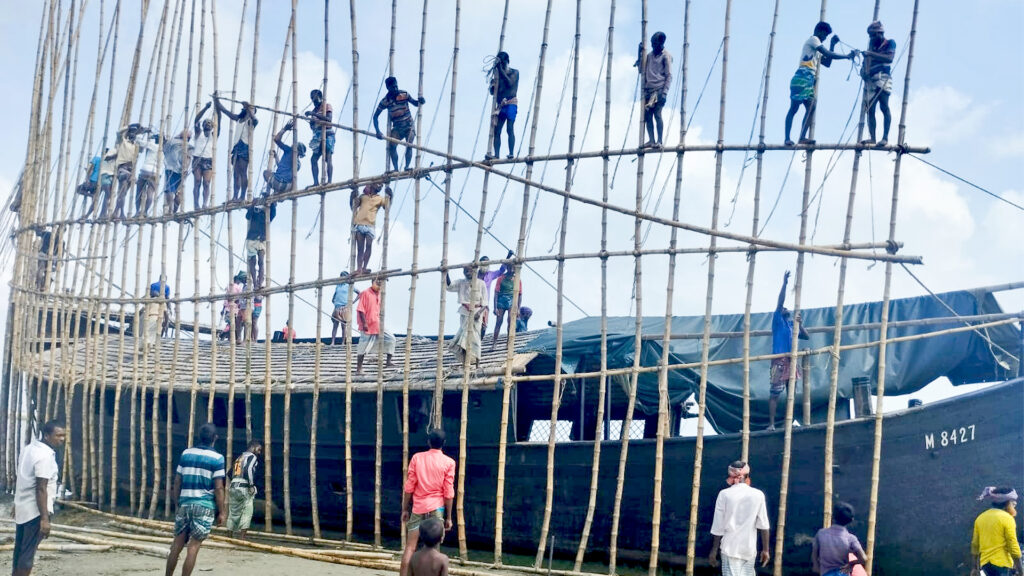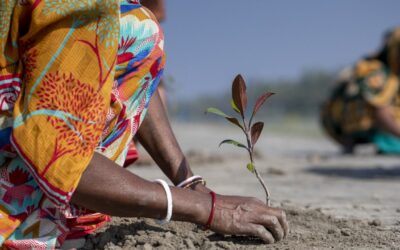Honouring Bengal’s millennia-old boatmaking heritage through restoration and repair

by Syed Abu Sinjan Saadat,
April 18, 2025
This World Heritage Day, we honour not just the monuments of the past, but the living, breathing traditions that connect us to our cultural roots.
A true masterpiece of heritage—the B613 is a malar and the largest surviving wooden boat in Bangladesh, and one of the last of its kind. Its preservation is a journey that spans generations, embodying Bengal’s maritime history and craftsmanship.
Originating from Pabna, the malar class of boat was once a common sight along the rivers of Bengal—designed as a cargo carrier and a houseboat, it served a dual purpose for generations of riverine communities. It offered livelihood and shelter, transporting jute, rice, salt, and seasonal produce across districts, while simultaneously serving as a floating home. Over time, however, the malar disappeared, becoming an extinct vessel in its native region. With changing tides, mechanisation, and urbanisation, the knowledge and presence of such boats slowly faded—until Friendship Cultural Preservation took up the challenge of bringing it back.
In 1997, under the leadership of Runa Khan, who would later receive the Rolex Award for Enterprise in 2006, Friendship began a quiet but groundbreaking revival of one particular malar. That revival took shape as the B613, a faithful recreation built with the guidance of the last remaining traditional boatbuilders. It marked a significant milestone in Bangladesh’s cultural preservation efforts.
The Preservation of a Living Heritage
The preservation of the B613 is a meticulous process that takes place every four to five years. This monumental task requires the combined efforts of over a hundred skilled boatmakers, carpenters, and artisans, all working in harmony to ensure the boat’s legacy endures. The process is not merely about restoring a structure—it is about safeguarding an ancient tradition, an entire way of life that continues to shape the people who practice it.
The journey begins with the boat docking process, which sees the B613 transported to Nogorbari, on the banks of the Jamuna River in Pabna District. This is no small undertaking—transporting the boat requires extensive arrangements and careful planning. The journey is a challenge, as it must be done during specific times when water levels are low and labour is readily available. This ensures the preservation process can proceed without delay.

Phase 1: Roof Restoration
Once safely docked, the first phase of preservation begins—the restoration of the Malar’s roof. Over the years, the bamboo roof has weathered the elements, creating holes. A skilled team of 20 to 25 artisans carefully crafts a new roof, shaping bamboo and layering materials such as polythene and chatai, a form of local heavy-duty rattan. This painstaking work takes around 20 days and serves as the first line of defence in protecting the boat from further environmental damage.
Phase 2 and 3: Right and Left Side Piling
After the roof restoration, the boat is lifted from the ground for the next phase of repairs. The boat is raised approximately a metre above the ground, a process that requires scaffolding and over a hundred workers. It involves piling on both the right and left sides of the boat, ensuring that it is lifted evenly and that the deteriorated wood beneath the waterline can be replaced. This process is passed down through generations, with each carpenter contributing their expertise to preserve a piece of history.
Phase 4: Keel Inspection and Repair
Once the sides are elevated, attention is turned to the keel—the backbone of the boat. The keel must be in optimal condition to maintain the boat’s stability, and so it undergoes a thorough inspection. If damaged beyond repair, a new keel is crafted and fitted. If the damage is minimal, the surrounding wood is replaced to restore the boat to its former glory. This phase ensures the boat remains sail-worthy, preserving both its function and its cultural significance.
Phase 5: Polishing and Ornamental Touches
In the final phase, the boat undergoes polishing to restore its lustre, followed by the addition of ornamental details. These finishing touches are not merely decorative; they are symbolic, highlighting the rich cultural heritage embedded in the boat’s design. Each decorative element tells a story of tradition, craftsmanship, and the people who made it.
A Key Piece of Bangladesh’s Maritime History
The preservation of the B613 is more than routine maintenance—it is a profound act of cultural heritage conservation. As the largest surviving wooden boat of its kind, its repair and restoration serve to honour the traditions of boatmaking that have long sustained communities across the country.
For those who have had the privilege to witness this extraordinary process, it becomes clear why these boats are so much more than just vessels. They are symbols of resilience, craftsmanship, and community spirit. The preservation process is a tribute to the boatmakers who continue to breathe life into this ancient art form, ensuring that future generations will be able to appreciate and learn from the rich heritage it represents.
This World Heritage Day, we celebrate the B613—as a boat and as a cultural treasure that embodies the spirit of Bangladesh’s maritime heritage. Its preservation will keep alive the skills and stories of the past, passing them forward to those who will continue to cherish and uphold them.



